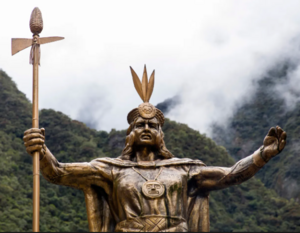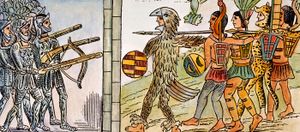Difference between revisions of "Fieri"
| Line 60: | Line 60: | ||
|GDP_nominal_year = 2020 | |GDP_nominal_year = 2020 | ||
|GDP_nominal_per_capita = ₵37,069 | |GDP_nominal_per_capita = ₵37,069 | ||
| − | |Gini = | + | |Gini = 49.8 |
|Gini_year = 2022 | |Gini_year = 2022 | ||
|HDI_year = 2020 | |HDI_year = 2020 | ||
Revision as of 13:05, 17 October 2023
Alathlusian Republic of Fieri | |
|---|---|
|
Flag | |
Motto: Unidade, Nossa Força! (Unity,Our Strength!) | |
| Location | Alathlusian Ocean |
| Capital | Lak'as |
| Largest city | Porto Freire |
| Official languages | Gaúcho |
| Ethnic groups (2020) | 85% Fierisi Nativo 10% Crabins 5% Other |
| Religion (2020) | Fierisi Catholicism |
| Demonym(s) | Fierisi |
| Government | Constitutional Monarchy |
| Zinedine Monscrabel | |
| Arturo da Silva | |
| Legislature | Fierisi Congress |
| Sovereignty from Montcrabe | |
| 1898 | |
| 1924 | |
| 1954 | |
| 1989 | |
| Population | |
• 2023 estimate | 14.9 million |
• 2020 census | 14 million |
| GDP (nominal) | 2020 estimate |
• Total | ₵117.9 billion |
• Per capita | ₵37,069 |
| Gini (2022) | 49.8 high |
| HDI (2020) | very high |
| Currency | Escudo Fierisi (EDF) (₣) |
| Time zone | AMT+4 |
| Driving side | right |
| Calling code | +307 |
Fieri, officially the Alathlusian Republic of Fieri (Gaúcho: República Alathlusiana de Fieri), is an island nation located in the Alathlusian Ocean, situated southeast of Tumland, north of Lurjize, and southwest of Tranquillia.
Contents
- 1 Etymology and pronunciation
- 2 History
- 2.1 Prehistory and Ancient Era (3000 BC)
- 2.2 Rise of the Lak'asa (3rd-7th century)
- 2.3 Golden Age (7th-8th century)
- 2.4 Dark Ages (9th-13th century)
- 2.5 Colonial Era (1600-1890)
- 2.6 Nationalist Movements (1890)
- 2.7 Interwar Conflict and Reformation (1920-1950)
- 2.8 Contemporary Period (1950–present)
- 2.9 Climate
- 3 Government
- 4 Economy
- 5 Culture
Etymology and pronunciation
History
Prehistory and Ancient Era (3000 BC)
The history of the Fierisi islands dates back to early pygmy-hominid activity approximately 700,000 years ago. The earliest evidence of modern human remains and primitive tree dwellings can be traced to 47,000 BC, although the reason for their sudden disappearance from the island remains unclear. Around 3000 BC, seafaring Ecrosians, who constitute a majority of the native population, migrated eastward and established settlements, giving rise to various warring tribes on the island. The limited presence of written records from this ancient era is attributed to a strong tradition of oral history, transmitted through songs, dances, and prayers. More than 5,000 semi-historical tales from this period continue to be part of contemporary performances and initiation rituals, with 200 of them preserved, translated, and analyzed in the ''Grand Archives'' library in the country's capital district.
Rise of the Lak'asa (3rd-7th century)

The site of Lak'as was founded around the 3rd Century AD during an era marked by increased settlement further into the island's rainforest region. By the 5th Century, its population expanded due to migrations from coastal tribes, establishing the settlement as the first city-state on the Fierisi islands. This period witnessed the creation of large idols, pyramids, and monoliths in honor of a Lakasa god of the sun, along with various styles of pottery, reflecting cultural and economic growth.
With the city-state achieving near supremacy in matters of both war and trade, Lak'asa society underwent a significant transformation characterized by the establishment of a rigid caste system under the unified leadership of a warrior-king. By 600 AD, the kingdom had either conquered or subjugated all other tribes on the islands. It is estimated that during this period, around 70,000 to 100,000 people resided around the city center, with nearly one-third of them being enslaved individuals from defeated tribes. Beyond the kingdom's borders were various subjugated tribal states, some of the largest being the southern Pye'rii, the tree-dwelling Gag'am, and the warlike Xi'poha. Over time, these smaller polities would attain significant autonomy within the kingdom, often through political marriages or military alliances, many of which were formed to suppress revolts.
Golden Age (7th-8th century)
The first non-migratory arrivals on the islands were made by Tumanitun sailors who used rafts similar to those used by their Ecrosian ancestors. Upon reaching Pye'rii territory, Tumanitun traders established a camp, initially believing the area to be uninhabited. After a period of limited contact, the sailors were approached by a small warband and escorted to their village center. In contrast to subsequent interactions with the native population, the Tumanitun explorers were received with notable hospitality. Evidence of this encounter is depicted or mentioned in various village murals, tapestries, and at least twenty different song histories, each offering slightly different accounts of the event. These recollections ranged from dramatized retellings to historical narratives involving feasts, romance, intrigue, and trade.
As news of the Tumanitun arrival and departure spread, Lakasa King Tap'ac and his personal guard journeyed to Pye'rii territory. Pottery from this period prominently depicts the meeting between the king and the tribe, where he demanded any foreign gifts be presented as tribute, with the intention of using these gifts to enhance his prestige and influence within the city's social court. This action would strain relations with the less powerful Pye'rii tribe but would set a precedent where traders would offer tribute directly to the capital city deeper within the islands, escorted by a group of the tribe that they had initially made contact with. The practice attracted a wave of trade ships, facilitating exchanges of Ecrosian goods for substantial quantities of cinnamon, vanilla, and cocoa.
Recognizing the value of these sought-after commodities, Lakasa nobles expanded the size and security of their plantations. While the increased social stratification proved prosperous for the increasingly powerful nobility, more commoners found themselves in a state of near-permanent servitude on these plantations, relegated to the menial tasks of slaves while being deprived of their opportunity to cultivate their own land and attend important festivals.
Dark Ages (9th-13th century)
The Lakasa Golden Age was brought to an end by the eruption of the islands' largest volcano, Mt. Matan'da. This resulted in a temporary abandonment of the kingdom's largest cities, causing a power vacuum that engulfed the islands in war. Smaller clans splintered off from large confederacies, often engaging in wars beyond enslavement, resulting in the extinction of around fifty tribes. This period saw significantly fewer written and drawn records being made, as more dramatic and allegorical songs became popular. Sailors from Ecrosia during this time period were often attacked on sight, and on some occasions, enslaved as servants, guards, farmers, and builders. This period saw the emergence of the Xi'poha tribe as the most powerful faction in the region, though they were never able to unify the islands due to frequent infighting between its class of nobles.
It is stated in rare historical records during this age that the cities of Lak'as, Kam'ai, and Xo'acca switched hands every decade or two due to the instability that wars had caused in the region. Kings often died in battles, were assassinated by rivals or family, and only in rare instances would live out their life naturally and die of age. Burial grounds were relocated to massive canyons deep in the jungle, to combat disease as well as to surrender the body to nature. This in itself was an act of reverence to the native people's worship of the pre-Ecrosian elder gods, explained in The Annals of Fierisi History as, " (the gods were) the very land, air, and water that filled the earth, and loved the creatures that lived off of its (life-source)." While many historians label this era a dark age, many Fierisi scholars have remarked that it was one of development in tribal culture as a whole. Most sites of burial, worship, and sacrifice were dated to this era, owing to a revival of smaller religions undedicated to a singular line of kings.
Colonial Era (1600-1890)

The exploration of the islands by Montcrabe began after a 1491 voyage led by Casimiro Seabra. Historians note that this expedition was primarily motivated by Ecrosian accounts of an old eastern trade route known for bringing in luxury spices. Departing from the eastern port of Ilhavela, the expedition included approximately 100 experienced sailors, who were divided among three caravels: The Cavalo, The Lobo, and The Cachorro. They arrived at the coastal settlement of the Pye'rii tribe, where they were initially met with a cautious reception due to concerns about potential retaliation from their Xi'pohan overlords.
After establishing a rapport with the Pye'rii tribe, Seabra and his crew initiated trade, exchanging steel weaponry and indigenous Surian seeds for precious gems, jewelry, and other luxury goods. A primary source from this period, originating from a sailor's diary of the crew aboard the Lobo, states, "After making landfall, (our) respite was brief. Communication with the local people proved challenging, but we managed to engage in valuable trade in exchange for their treasures." As the crew became aware of the substantial natural resources present on the islands, Seabra's original trading objectives shifted toward a more conquest-oriented approach. However, owing to a shortage of soldiers, he postponed these intentions and chose to send a letter back to Montcrabe, seeking approval to govern the islands in his name.
In the meantime, Seabra and his crew established a rapport with the Pye'rii tribe and were eventually escorted to the Xi'pohan court of Lak'as to meet King Manco The Younger. A feast was held in honor of the explorers, although it was accompanied by an underlying skepticism among the Xi'pohan nobility. Leading theories suggest that this skepticism stemmed from concerns that if the islands were to open themselves to foreign influences, there would be an opportunity for these outsiders to align themselves with rival tribes, many of whom had been subjugated by the Xi'poha in previous conquests.
Upon the arrival of the letter sent by the expeditionary fleet, Montcrabin authorities covertly declined Seabra's request. Instead, they organized a more substantial detachment led by Matheus Freire. The primary objective of this larger group was to collaborate with Seabra's forces and allied tribes with the ultimate goal of deposing the incumbent ruling kingdom and installing a more favorable ally on the islands. Freire and his crew arrived slightly later than anticipated but successfully negotiated the establishment of an outpost, facilitated by Seabra's growing ties with the youthful chieftain of the Pye'rii, Kam'ui The Wide. Over the course of several months, trade in the area experienced a significant surge in activity. This occurred as word spread among Montcrabe's various merchant guilds about the potential establishment of a new colony in the region.
Nationalist Movements (1890)
Text
Interwar Conflict and Reformation (1920-1950)
Text
Contemporary Period (1950–present)
Text
Climate
Text
Government
Legislation
Text
Foreign relations
Text
Military
Text
Law enforcement and crime
Text
Federal Districts
Economy
Text
Tourism
Text
Population
Text
Ethnic and racial groups
Text
Religion
Text
Urban areas
Text
Template:Largest Cities of Fieri
Culture
Text

Text
Art
Text
Sports
Text
